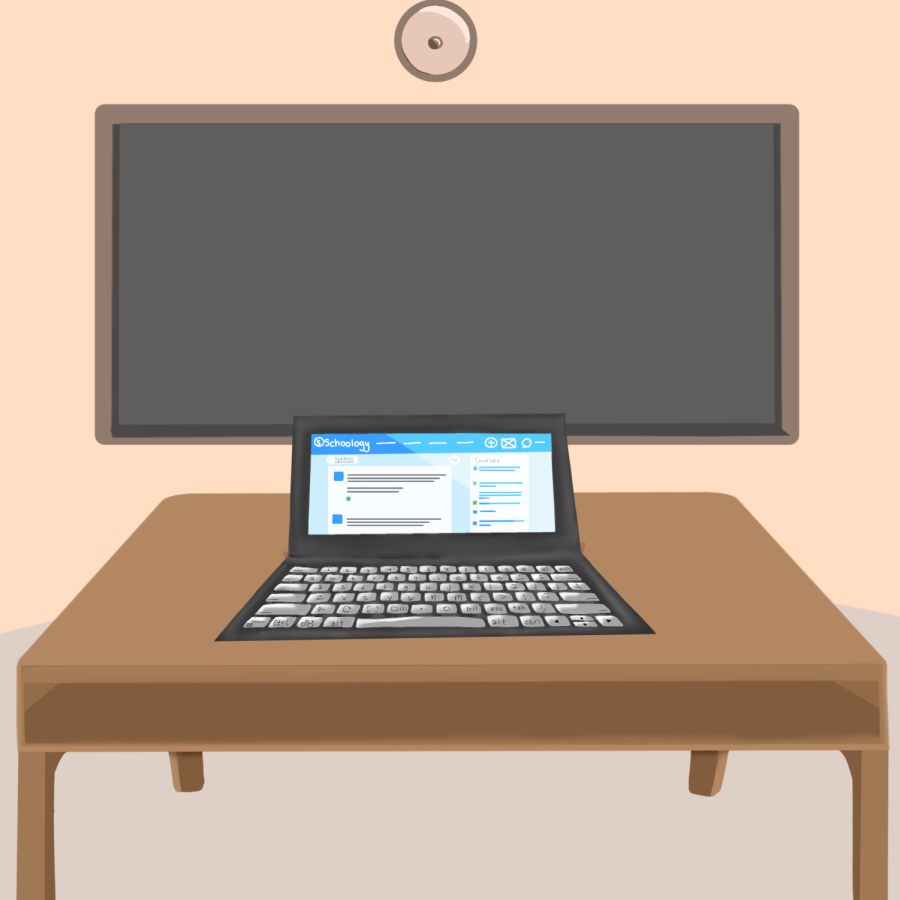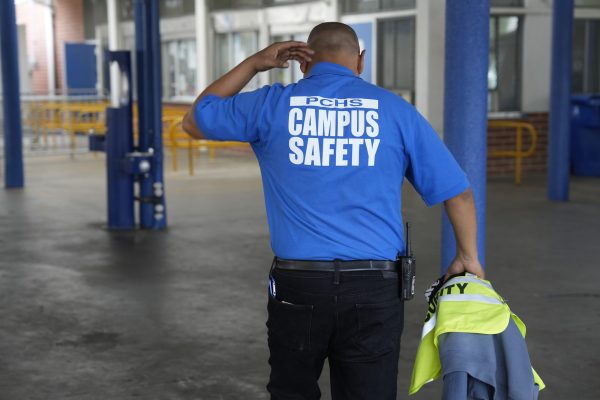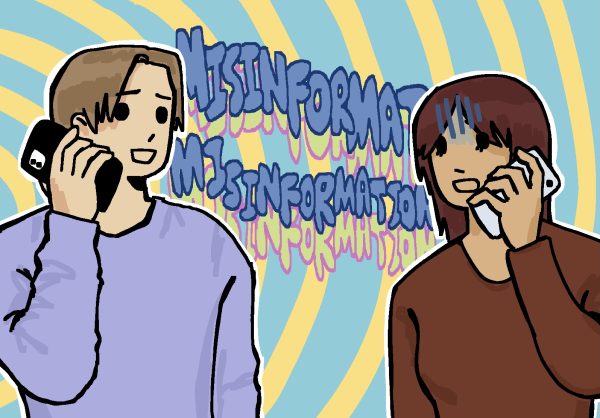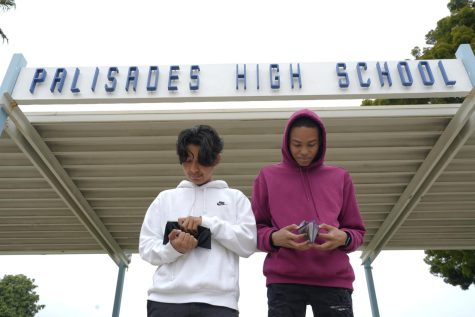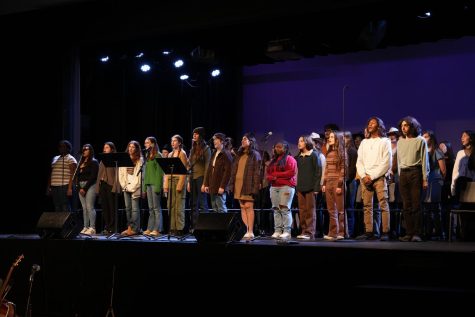Welcome to High-Tech High
Since the Onset of the Pandemic, Instructional Delivery has Changed
For today’s students, a classroom from 50 years ago might look unrecognizable without a vital component of modern education — technology.
A myriad of software tools enable teachers to develop different learning techniques. Over the past few decades, classrooms transitioned from relying solely on textbooks, libraries and dictionaries to using Schoology, LockDown Browser and Google Drive. The integral role technology plays in current Pali teachers’ curricula marks a significant difference from the traditional teaching styles of teachers even just three years ago, before the COVID-19 pandemic.
Pali biology teacher Alexander Van Name recalled his experiences with educational technology.
“When I was in sixth grade, maybe even fifth grade, that was when a computer first appeared in a classroom,” Van Name said. “Nobody knew how to use it [because] it was something that they basically just threw into the classroom.
“When I came to Los Angeles in 2003, I was working at Wildwood School, which is a private school, and it blew my mind because there were laptop carts,” he added. “And people would just borrow laptops like no tomorrow.”
Van Name said that, with the increase in software capabilities, teachers began to create their own websites and use other platforms in order to disseminate information to their students.
“We were all given iPads [in middle school],” said Madeline Neuberg, who attended Pali last spring as a sophomore before moving abroad. “That was obviously a big change because we went from having nothing to having these technological devices at our fingertips… Now, I freak out if I don’t bring my computer to school because I use it literally every class.”
The COVID-19 pandemic hastened the process of digitization in the classroom as teachers were forced to translate their curriculums to virtual platforms in the spring of 2020.
The number of educational technologies used by school districts in the United States has increased exponentially in the 21st century. According to EdTech Top 40, there was an average of 548 products accessed by national school districts every month during the 2017-18 school year. According to the same source, as students spent most of the year in online learning in the 2020-21 school year, the number of products used by the same districts reached an average of 1,449 per month. Last year, schools used an average of around 1,500 educational technologies every month, representing an increase of over 150 percent from the 2017-18 school year.
Now that learning is back in person, students have seen technology remain prevalent throughout post-lockdown years.
“There was a steady incline in [the use of educational technology], and then [with] COVID it was forced, like you had to get with it,” Neuberg said. “You didn’t really have a choice… [technology use] hasn’t gone back to how it was before COVID.”
Pali teachers continue to implement new software tools into their curriculums, using a variety of different online platforms. The purchase of 44 new SMART boards to classrooms highlights the digitalization of learning at Pali.
“Right now, what we’re doing is we’re using Schoology a lot more,” Van Name said. “Pressure is on [teachers] to have education on demand. And so teachers have developed ways to deal with that through things like EdPuzzle.”
“[Schoology is] a huge thing,” Neuberg added. “[It’s] a way to note what’s going on in school. I can’t imagine not having that and not knowing what your grades are [at the moment].”
Junior Claire Kim said that she has also noticed the increased use of platforms such as Kami, Albert.io and AP Classroom.
“Kids do have [access] to a greater amount of knowledge,” Kim added. “[If] they don’t know something, then they can look it up themselves and figure it out that way… In case their teachers aren’t able to help them, they can help themselves.
However, the reliance on online platforms for learning has its consequences, such as an increased possibility for cheating, more distractions and access to non-educational websites, all of which are causing new problems for teachers.
“[Now you’ve] got to worry about cheating on tests and so forth,” Van Name said. “[It’s] become easier for students to upload answers and also share answers between each other… And while we do have websites like LockDown Browser to help us out, [there’s] a real tension now with getting students to not use their cellphones in class.”
Van Name added, “[When teachers] redirect [a] student from a non-educational website, as soon as we walk away, they just do the four-finger swipe, they change screens, and then they’re back in action.”
Nonetheless, with the dependence on new technological softwares in classrooms, it doesn’t seem likely that Pali will return to its previous curricula.
“I think we’ve gotten so used to [technology] over the past two years, and [it’s] made people’s lives so much more convenient that they’re not going to want to go back,” junior Danielle Efron said. “So I think as technology advances in the next few years, it’ll be seen more prominently [in] schools.”

Emma Nakaoka is a senior at Palisades Charter High School and is excited to be an Editor-in-Chief for the 2023-24 school year. Emma joined Tideline as...

Leela Rao, a Senior, is Tideline’s current Managing Editor. She was an illustrator at Tideline for two years and has a passion for art and literature.


